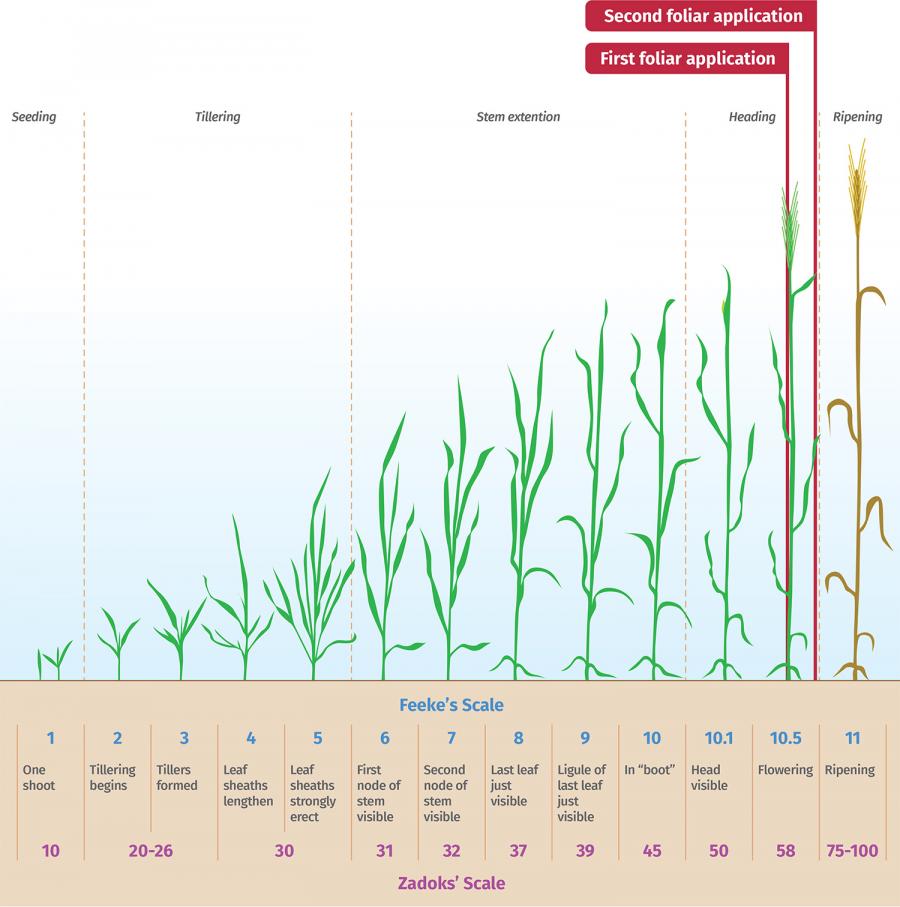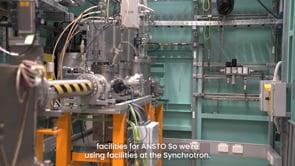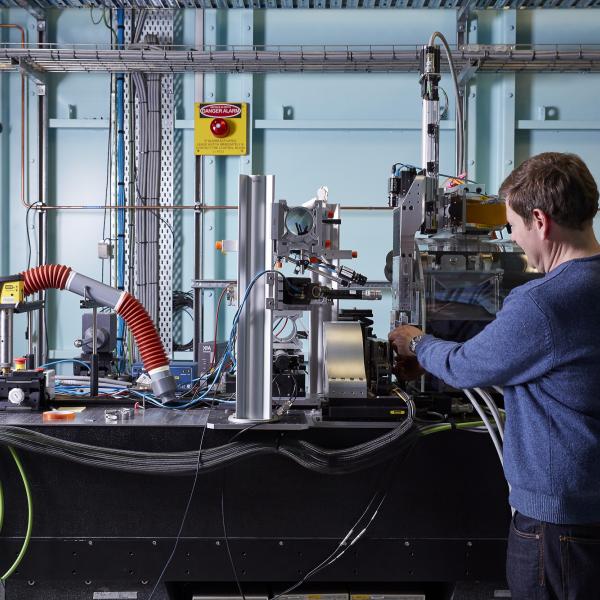

Published on the 10th November 2022 by ANSTO Staff
Key Points
- Murdoch University scientists and collaborators are investigating the best method and time to administer micronutrients to biofortify wheat crops
- Nuclear techniques can track the movement of micronutrients that are administered to leaves during their growth cycle
- Preliminary findings suggest that zinc with silica nanoparticles seems to be helping translocate the zinc more rapidly than two other two forms of zinc tested
Researchers from Murdoch University and associated collaborators are using ANSTO’s unique nuclear capabilities to gain detailed information about how wheat crops take in administered micronutrients to maximise their efficient use.
The goal is to find the best time and method to give micronutrients to the crops.
Dr Tona Sanchez-Palacios, Research Fellow at Centre for Sustainable Farming Systems, Murdoch University, who is working with Professor Richard Bell, on an Australian-wide project funded by the GRDC described the main goal of the project was to produce and test novel fertilisers that can lead to the biofortification of wheat grain with zinc (Zn).
"Applying foliar fertilisers to boost the nutritional value of grains is a method that Australian farmers can adopt to maintain grain quality and provide the required nutrition needed for human health, especially in a population recovering from COVID,” said Dr Sanchez-Palacios.
Dr Sanchez-Palacios was at ANSTO for the wheat experiments in the Lucas Heights greenhouse, part of ANSTO’s Vivarium capability, with Dr Tom Cresswell, Nick Howell, Sarah Beard, Dr Melanie Ferlazzo and ANSTO Graduate, Alexandra Boyd.
“Our study is about improving the delivery of zinc to grains, applied directly onto leaves, for wheat crops in Australia. Here, the soil conditions are challenging for farmers, they really need to put a lot of fertilisers in crops to achieve high yield potential across the grain industry in Australia,” added Dr Sanchez-Palacios.
Using zinc radioisotopes produced at ANSTO’s OPAL research reactor, the investigators apply them to the plant and then trace their biodistribution using a radiographic technique.
The technique reveals the amount of zinc absorbed and precisely where the zinc, if it has moved from the site of application, has been transported in the plant body including the grain.
While the application of zinc as a micronutrient improves the quality of the edible parts of the plant – the grains, it can be costly to farmers to apply to wheat. Therefore, knowing when and how much zinc to apply is critical for this technique to be adopted in agricultural systems
“The work builds on previous work that we did in 2018 tracing zinc in wheat with collaborators at the University of South Australia. In that research, we administered the zinc at the post-seedling stage,” explained Dr Tom Cresswell, an isotope ecologist at ANSTO.
Now investigators are looking at different formulations of zinc and different ways of applying it to the leaf, known as foliar applications.
“The challenge around agriculture in Australia and the purpose of agricultural research generally is finding ways to make the most out of the available land and the available resources that we have,” said Dr Cresswell.
“Anything that we can do to maximise the quality, minimise the costs and improve the yield for farmers and the quality of the crops for consumers is crucial.”
Crop scientists are assisting by developing novel formulations that they can apply to maintain the mineral nutrition status of high-yielding plants and overall improve the production of crops while increasing the nutritional value of Australian-grown grains.
Part of this the GRDC project is building connections with facilities such as ANSTO to test new approaches that can be beneficial to Australian farmers and the industry within the next five years.
Fertilisers provide a balance of the required nutrients to maintain high-yielding potential. However, with the increasing cost of fertilisers globally, there is a risk of reducing crop production. GRDC is interested in optimising fertiliser application methods to remain competitive in international markets.
“As well as using element mapping techniques at the Australian Synchrotron, we also needed nuclear techniques. They give us a very sensitive way of determining the mechanisms at work in our novel foliar formulations tested on wheat plants,” said Dr Sanchez-Palacios.
“Having access to a radioactive form of zinc and being able to apply it to the plants in a safe environment is very important.”
Dr Cresswell explained that when the plant is imaged using autoradioagraphy, the area where the zinc appears as a bright spot.
“It allows us to assess the uptake of micronutrients when administered in different applications.
“We want the nutrient to reach the edible part of the plants, where it is most beneficial to the person or animal consuming the grain.”
In the experiments, the zinc formulation was administered at the flowering stage.
“Today we conducted the second foliar application two weeks after the first foliar application. We are now targeting the stage known as grain filling,” said Dr Sanchez-Palacios.
“We believe that this stage of the plant is a critical time to maximise the loading of zinc into the grain. And we would like to know, if by doing the application at this stage, we can increase the levels of micronutrients into the grain more effectively than that at early stages of development.”
Preliminary indications suggest the scientists are gaining the information they wanted.
Twenty-four hours after they applied the different zinc treatments to the leaf, the plants are autoradiographed in a dark cupboard away from light.
A phosphor plate absorbs the beta radiation from zinc-65 while it is still on the plant, revealing the site of the radioactive zinc.
The team is working with three different formulations of zinc, three different ways of delivering the same concentrations of zinc to the plant at two different times.
“We are using a soluble form of zinc, zinc chloride; zinc-ionophores, which is a lipid-soluble molecule that binds the zinc and moves it across plant cellular boundaries; and zinc with mesoporous silica nanoparticles that encapsulate the zinc.
After 24 hours, there is a difference between those different applications in the imaging.“ confirmed Dr Cresswell.
“It is very qualitative but definitive information about how quickly it is being moved from the site of application.
“So far, the silica nanoparticles seem to be helping translocate the zinc more rapidly than the other two forms of Zn, which is fascinating.“
Project work will continue using the X-ray fluorescence microscopy beamline at the Australian Synchrotron.
This technique reveals the spatial distribution of the foliar applied zinc on a single leaf in vivo and produces highly detailed images of agronomically biofortified grains produced in Western Australia wheat fields.
Please check back for Part 2 of this research which will highlight the experiments on the X-ray fluorescence microscopy beamline.



